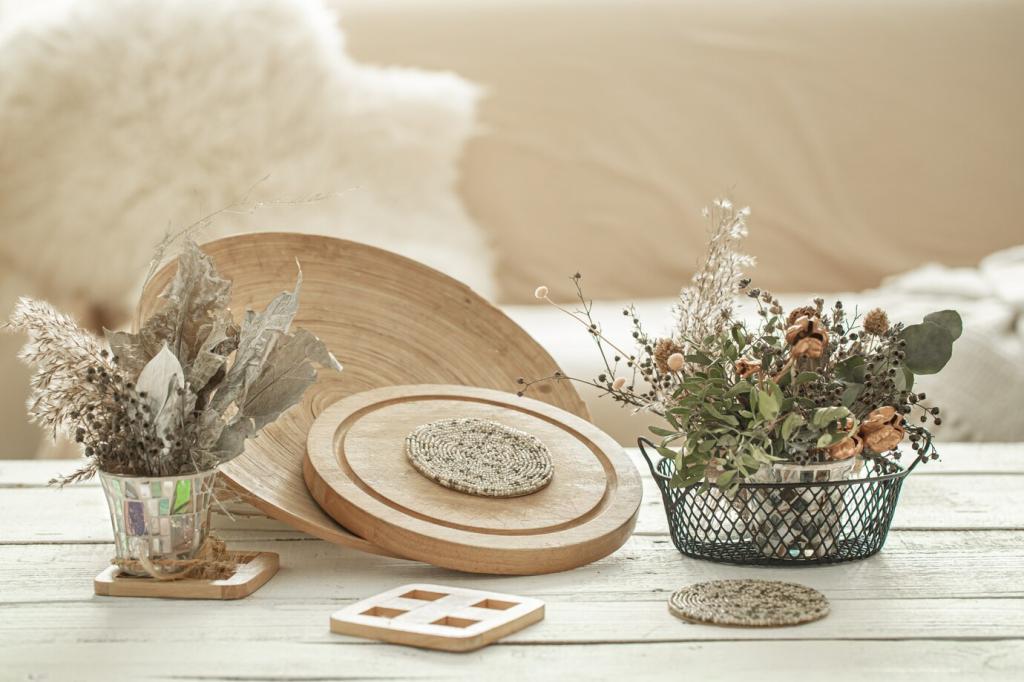Discover the perfect synergy between innovative technology and eco-conscious design in the world of modern home furnishings. Advancements in manufacturing and smart material selection are redefining comfort, functionality, and sustainability, shaping tomorrow’s homes with a commitment to both performance and the planet. This guide explores how new technologies are transforming home interiors, leading the way toward a more responsible, efficient, and beautiful living environment for everyone.
Innovative Materials for a Greener Future
The textile industry has witnessed a revolution with the development of fabrics crafted from recycled plastics, organic fibers, and upcycled content. These advanced materials drastically cut down on landfill waste and energy consumption during production. Not only do they offer impressive durability and stain resistance, but they also maintain a luxurious feel and vibrant colors. By selecting furniture and upholstery wrapped in these next-generation textiles, homeowners contribute to a cleaner environment without compromising on comfort or style. The ongoing evolution in fabric technology ensures that sustainability and opulence continue to go hand in hand, especially as manufacturers adopt closed-loop systems to minimize overall waste.

Integrated Smart Technology for Modern Living
Adaptive Lighting and Climate Control Features
Modern furnishings increasingly incorporate adaptive, technology-aided lighting and climate controls. Think coffee tables with embedded LED mood lighting, or armchairs with built-in cooling and heating elements that adjust based on your preferences and occupancy. These features reduce the necessity for standalone gadgets, consolidating energy consumption and tailoring the ambiance to match your day-to-day activities. By using sensors and smart algorithms, energy is used only when needed, substantially reducing household carbon footprints. This convergence of comfort, luxury, and sustainability acts as a hallmark of technological progress in home environments, where efficiency is achieved without sacrificing personal style or quality.
Smart Furniture with IoT Connectivity
The Internet of Things is redefining the function of home furnishings. Items such as smart beds, desks, and entertainment units now come equipped with IoT connectivity, allowing users to interact with them through voice commands or smartphone apps. These devices can monitor usage patterns, promote energy-saving behaviors, and even notify homeowners when maintenance is required or resources are running low. The feedback loops created by this data-driven approach empower individuals to make informed decisions that optimize their living space for sustainability. As IoT technology becomes more accessible, expect a future where every piece of furniture plays an active role in managing and reducing household energy use.
Self-Sustaining Energy Solutions
Technologically-advanced furnishings now often include integrated systems for capturing and utilizing renewable energy. Solar-powered charging tables, window seats that harvest light, and kinetic energy furniture that converts movement into electricity are just some examples. These solutions provide convenient power for electronic devices while bypassing conventional energy grids, further reducing environmental impact. Such innovations enable homeowners to become active participants in their own energy production, reinforcing the importance of sustainability at the heart of modern interior design. With ongoing advancements in energy storage and distribution, these systems promise even greater autonomy and efficiency in the years to come.
Health-Conscious and Sustainable Living Spaces
01
Furniture and home surfaces equipped with air purification technology are transforming the way we interact with indoor environments. Desks, coffee tables, and cabinets now feature embedded filtration systems or coatings that neutralize harmful pollutants, allergens, and even airborne bacteria. Some utilize photocatalytic finishes or integrate natural air-filtering plants, harnessing technology and biology in tandem. These innovations ensure cleaner indoor air, supporting respiratory health and overall wellness, especially crucial in urban homes where outdoor air quality can be compromised. By investing in such pieces, homeowners can create living spaces that actively contribute to a healthier lifestyle—without additional gadgets cluttering their space.
02
The commitment to sustainability also involves minimizing exposure to harmful chemicals found in traditional furniture. Cutting-edge manufacturers are now dedicating resources to identifying and using non-toxic adhesives, low-VOC paints, and hypoallergenic natural fabrics. These advancements don’t just support environmental goals; they also provide a safer and healthier indoor environment, particularly for children and sensitive individuals. As a result, the choices made in furniture selection now play a direct role in enhancing overall wellbeing, going beyond mere aesthetics. With more effective labeling and transparency, it’s easier than ever for consumers to find health-conscious products that align with their values and lifestyle.
03
The future of home comfort lies in materials that self-regulate temperature and humidity. Recent breakthroughs include textiles and foams that adapt to room conditions, wicking away moisture and retaining or dissipating heat as needed. Such advancements keep indoor climates pleasant and stable while reducing the reliance on energy-intensive air conditioning or heating systems. The result is a home environment that stays consistently comfortable and energy-smart, all year round. These high-tech materials also help in preserving the longevity and aesthetics of furnishings by preventing mold, mildew, and wear caused by moisture fluctuations, further enhancing sustainability through durability.
